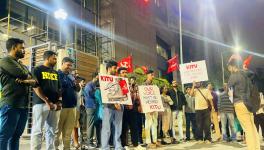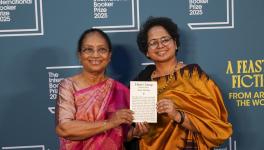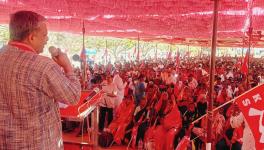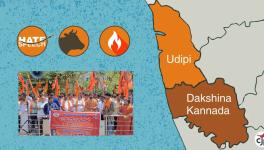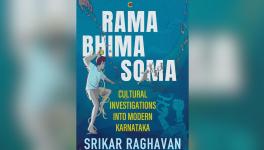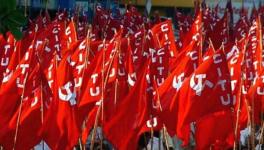Mantra Mangalya: A Rationalist Wedding Ceremony in Karnataka
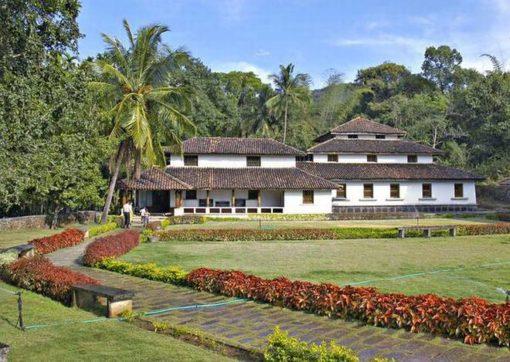
Image Courtesy: The Hindu
For a Kannadiga, whatever path you take hoping that it is untrodden, you always find the footprints of someone who has already walked on it. There is the benevolent assurance that this someone thought far ahead of their times and paved the difficult path for you. For many like me, this is Kuvempu the great poet, novelist, dramatist, critic and essayist. But far beyond his writings, he was a cultural hero who reflected deeply on the small things which also constitute culture and came out with ways to make them meaningful. This is not the visionary rishi and modern day Valmiki, as Kuvempu is known in Kannada popular culture. This other Kuvempu is the critical insider, the rationalist believer, who can do radical things with culture without seeming to cause ruptures. As a young poet when “temple entry” movements were happening everywhere, he had something very simple to tell his shudra and dalit friends. “Why do you want to go to a temple where you are humiliated? Shun them. Look around you. God is in the early light of the day and in the lovely sunset. Worship him’. Though he couched as a romantic-idealistic register, what he wanted to say was that one should shun institutionalised religion. Despite his mystical non-dualism, he practiced what he preached. He never worshipped in a temple. When much later his son, the great writer Poornachandra Tejaswi, decided to marry Rajeshwari, his senior at college who was not from the Okkaliga caste, Kuvempu insisted on one thing – that the marriage would be a simple one, without any vedic ritual and mantras. This was in 1966.
Instead, he wrote an extra-ordinary little text in Kannada in the form of a wedding vow/oath which had to be administered to the bride and groom by someone in the presence of friends and relatives (whose number was also to be small not exceeding 200!) This later became famous as ‘Mantra Mangalya’ and the simple wedding ceremony also came to be called ‘Mantra Mangalya wedding’. With one stroke Kuvempu did away with Sanskrit mantras and rituals and the huge expenses of wedding ceremonies.
The original text of Mantra Mangalya has verses and parts of prayers from the ancient texts including the Rig Veda with Kannada translations made by Kuvempu himself. They are all prayers to the supreme power ruling the world. It is a sad fact that many of the farmers’ suicide in the Mandya, Hassan region where Okkaligas are the dominant community, are also owing to wedding expenses, among other factors. I am mentioning the community because many of Kuvempu’s sharpest comments were on his own community which he hoped would free itself from blind beliefs, meaningless rituals and the patronising of institutionalised religion. He also ensured that the vow could be taken by brides and grooms of any community and religion because the Mantra Mangalya text steers clear of any religious symbols. It is written in the modern day register of two autonomous adult individuals entering into a companionship which has absolutely nothing to do with their birth, caste, status or religion. It is also imbued with a profound understanding that the relationship being entered into will find its fruition only in the social world, depending on what they contribute to it. As I said earlier, Kuvempu’s radicalism is not always overly emphatic. The bride and the groom say that they neither believe nor disbelieve in God, rather they would go by their individual experience in the matter.
Kuvempu also subverted many aspects with this programme of a simple wedding. The parents are part of the small community of friends and well-wishers, so that the father is not required to “make a dana” (gift) of his daughter or give away ‘Theparayadhan” (another’s property – the daughter of course!) The bride and groom are autonomous individuals who are making a conscious choice of becoming a couple. When Tejaswi’s wedding happened in 1966, the new style wedding ruffled many feathers. But young turks like Kadidal Shamanna, Tejaswi himself and K Ramdas a fierce young revolutionary teacher and writer, discovered in Mantra Mangalya a powerful way of dismantling tradition and reinforcing their socialist ideas.
By then they were all members of the Samajavadi Yuva Jana Sabha which proved to be the incubation site for the finest leaders of the people’s movements in Karnataka. Let me also gleefully mention that these hon’ble young turks were at least one cosmos away from the majestic, awe inspiring, rishi-like Kuvempu! They were joined by Prof. Ravivarma Kumar and then led by Prof. M D Nanjundaswamy, the great founder of the Karnataka Rajya Raitha Sangha (KRRS). Such a group of irreverent, mischievous and anarchic geniuses has never been seen in the history of Karnataka. However they not only supported Mantra Mangalya, but later founded Manava Mantapa— an association to encourage inter-caste and inter-religious marriages. According to dependable oral history, they also recruited a small sena to provide physical protection to the couples from angry parents and relations.
Indeed this was a heady period in Karnataka’s recent history. Both M D Nanjundaswamy of KRRS and B Krishnappa of Dalit Sangharsha Samiti strongly supported simple inexpensive weddings. No one has kept a record of the number of these weddings but Prof. Ravivarma Kumar says it was in the hundreds. We have tried to make a rough estimate by counting those who attend the conventions of couples who have married out of their caste and religion. Manava Mantapa has maintained a register of such marriages and also the testimonials of the couples. What is of great relevance is that the small seed sown by Kuvempu grew into a sheltering tree for all those young men and women who want to enter into a companionship of love. It has convinced many that such marriages have greater sanctity. Though as years passed by and the popular movements receded, the middle-class is back to expensive weddings, sixteen item dinners and huge wedding halls which don’t cost less than a few lakhs even in my own small city. The University of Agriculture Sciences estimated that the food wasted at weddings in Bengaluru on a single day can feed lakhs of starving people. I feel ashamed to mention that in Karnataka recently two young children died eating mud because they had nothing else to eat.
Kuvempu Pratishtana is taking the right step by planning to construct a centre for the Mantra Mangalya weddings. Earlier, Kuvempu Pratishtana nominated office-bearers to a committee to support Mantra Mangalya. If this leads to a social movement or just a new way of looking at weddings, Kuvempu would be very happy. In his great novel Malegalalli Madumagalu, the brides have to elope with their loved ones to escape from a feudal and patriarchal world to an uncertain future. The planned centre could be a haven for today’s brides who need not elope, but quietly defy everything which makes marriage a socially approved sham.
The text of Mantra Mangalya is included in Kuvempu: Samagra Gadya Vol.2 (Collected Prose). It has three sections. The first one explains what Mantra Mangalya is. “It is not a book or anthology. It is a type of marriage. Through the Mantras and the oaths, the bride and the groom invoke the power symbolising all the values worshipped by Indians since times immemorial”.
“As this mode of marriage has been shaped to be simple, no part of the wedding shall be expensive or ostentatious. No one shall receive dowry or bride price in any form. Such a brokerage business which treats the bride and groom as beasts with no self-respect is absolutely prohibited. Those elders who are a party to such brokerage, which is responsible for female foeticide and bride–burning, are not fit to administer the oath. Those brides and grooms who are party (to these foul practices) are not fit to take the oath or pronounce the Mantra … The total number of invitees including parents and relations should not exceed 200. Inviting all and sundry and creating a din destroys the sanctity and seriousness of Mantra Mangalya. Gifts are prohibited. No loud percussion instruments or microphones should be used … No particular time is auspicious or inauspicious. Mantra Mangalya believes that the whole life of man is auspicious for making life fruitful … The objective of Mantra Mangalya is to liberate Indians from the rituals which are indirectly responsible for evils of caste system, gender inequality and untouchability.”
The first section has meticulous instructions even on the seating arrangements. Photographs of four Mahapurushas such as Ramakrishna Parmahamsa and Sharada Devi or of any ideal couple shall be placed as spiritual witnesses. After the administering of the oath, the couple will sign in the columns provided within the text itself. It also says that Mantra Mangalya does not violate any provisions of the constitution or law.
The third section is titled “Marriage Code”. It is an extra-ordinary set of statements meant to be administered to the bride and groom. Some excerpts:
- By marrying in this way you are freed from all mental and spiritual shackles and such other slavery.
- You are neither superior nor inferior to any caste or community on this earth.
- We have on this day liberated you from all artificial castes (distinctions)
- We have freed you from all narrow religious creeds and also from all ritualistic traditions, falsehood and from blind beliefs.
- You need not live as slaves or bonded labourers of household gods or gods of your community. The first and last god for human beings, are the human values of society.
- All human beings are equal. You have this day rejected all religions and traditions which say that man is superior to woman.
- Neither wife nor husband is subservient to the other. The wife is as independent and equal as the husband.
- Love alone is the means of making the husband and wife live together. For those who do not love each other the thali and going round the holy fire are a waste; marrying according to any tradition is also a waste.
- Reject all pontiffs, acharyas and gurus who tell lies in the name of god. Shun all temples and pilgrim places which loot money in the name of god”
Therefore the Mantra Mangalya is not a handbook for a simple wedding. It is a manifesto for liberating young men and women from all shackles, both man-made and mind-made. It goes without saying that there was no overnight revolution in a caste-centric traditional society with Mantra Mangalya. But an entire generation discovered through it, a new conception of marriage as freedom and choice bound only by love. The Manava Mantapa with nodal centre at Mysore gave a more radical shift to what Kuvempu planned for his son Poornachandra Tejaswi.
In his reminiscences, Kadidal Shamanna describes the genesis of Mantra Mangalya. He, Tejaswi and some friends were running a press to publish material supporting socialist ideology and the new writing in Kannada. Shamanna also had to print many trivial matters to sustain the press. When someone brought the text of a traditional wedding card, he was furious wondering why shudras should be following vedic/brahmanical rituals and also blind beliefs about auspicious time, presence of a Brahmin priest etc. Tejaswi discussed this with Kuvempu who partly wrote and partly dictated the text of Mantra Mangalya to Prof. Prabhushankar his disciple and eminent writer.
The first Mantra Mangalya wedding was that of Kuvempu’s son, Poornachandra Tejaswi to Rajeshwari. Later Shamanna and his sister also followed the Mantra Mangalya tradition. Shamanna took active part for many years in encouraging young men and women, persuading their parents to follow the tradition. Some of the hilarious episodes relating to such weddings are subject fit for a comic epic. There was to be a wedding in the family of Kadidal Manjappa, the former Chief Minister of Karnataka. Shamanna and friends decided to hold a black-flag protest against the large number of guests invited to the wedding. As he ruefully records, they arrived a little too late with the black flags and the guests had already left after a sumptuous meal! Justice N D Venkatesh, a great figure in Karnataka had to intervene before there was an altercation between Shamanna and his friends and Manjappa.
Manava Mantapa Bengaluru is a registered body which has been supporting inter-caste and inter religious marriages. Indira Krishnappa, of Gandhi Pratishtana (wife of late B Krishnappa, founder of DSS), Prof. Ravivarma Kumar, former Chairman, Backward Classes Commission Karnataka are leading Manava Mantapa now. Indira Krishnappa feels that though the rigidity of caste structures has not relaxed, many young men and women are entering into inter-caste marriages. Such marriages are also finding acceptance in contemporary society. However there is a need to follow the total avoidance of ostentation, ritual and reckless expenditure which was central to Mantra Mangalya. Kuvempu’s vision of Mantra Mangalya was for all weddings and was based on a radical rejection of the rigidities of tradition.
Get the latest reports & analysis with people's perspective on Protests, movements & deep analytical videos, discussions of the current affairs in your Telegram app. Subscribe to NewsClick's Telegram channel & get Real-Time updates on stories, as they get published on our website.









